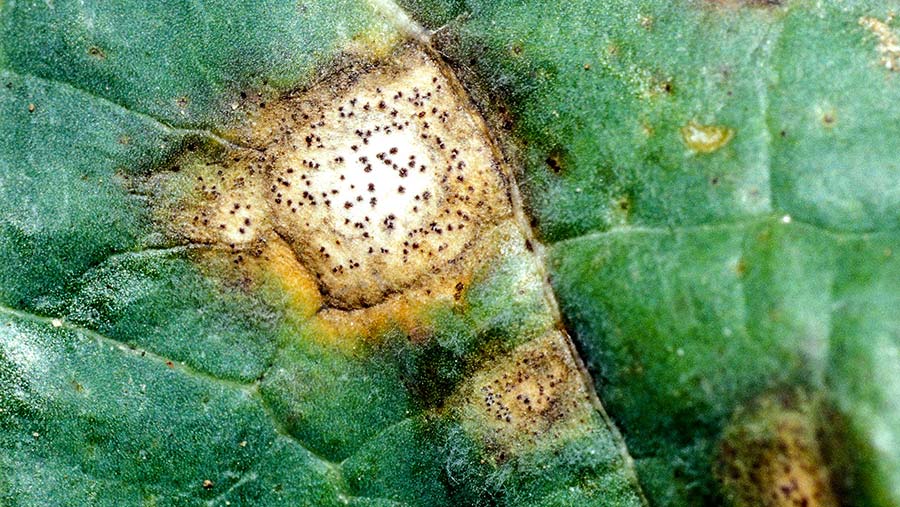Wet weather triggers early onset of phoma in OSR
 © Blackthorn Arable
© Blackthorn Arable Recent warm and wet weather has heightened the risk of phoma in winter rapeseed, with some crops already displaying symptoms in 10% of the crop, according to the AHDB’s disease forecast.
Compiled by Rothamsted Research, the 2020 forecast revealed that 66% of crop sites would reach the 10% infection threshold considerably earlier than usual, with eight sites predicted to have reached it in September, in contrast to just two sites last year.
Catherine Harries, who manages disease research at AHDB, reports that early-sown crops are starting to show phoma symptoms.
See also: How two OSR growers escaped the flea beetle threat
“Phoma spores mature on stubble, which is a process that is favoured by warm, wet weather. Many sites monitored in 2020 experienced these conditions, so it is important to look for symptoms in the field, especially when the local forecast suggests the threshold date is near,” she says.
Phoma management
Ms Harries recommends monitoring crops closely for phoma leaf spots during the autumn, prioritising susceptible varieties and underdeveloped crops that are more vulnerable to disease.
To maximise fungicide efficacy, she suggests applying the spray as close as possible to the threshold date, highlighting the value of monitoring crops and checking the AHDB forecast for crop treatment thresholds.
She adds that varieties with lower resistance ratings for stem canker (7 and below) and smaller crops should be treated first, when 10-20% of plants have phoma leaf spot.
Varieties with high resistance ratings of 8 and 9 should only be treated for stem canker if more than 20% of plants have symptoms.
If reinfection occurs, growers should consider a second spray about four to 10 weeks after the first application, adjusting spray programmes to account for any late-autumn fungicides.
About the phoma forecast
Temperature and rainfall information from 1 July to 26 September is used to simulate the development of Leptosphaeria maculans – a key pathogen responsible for phoma leaf spot and phoma stem canker.
Accounting for subsequent crop infection, the forecast predicts the date when 10% of oilseed rape plants could potentially show symptoms of phoma leaf spot.
This level of infection relates to a treatment threshold for varieties with lower disease ratings (7 and below) for stem canker.

